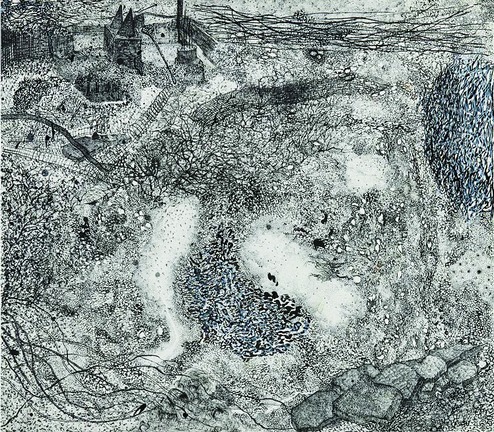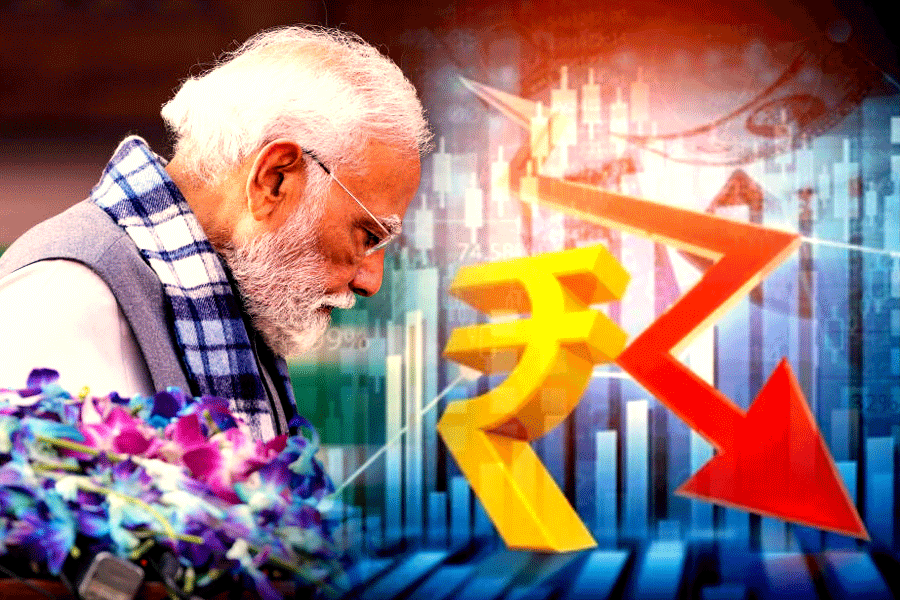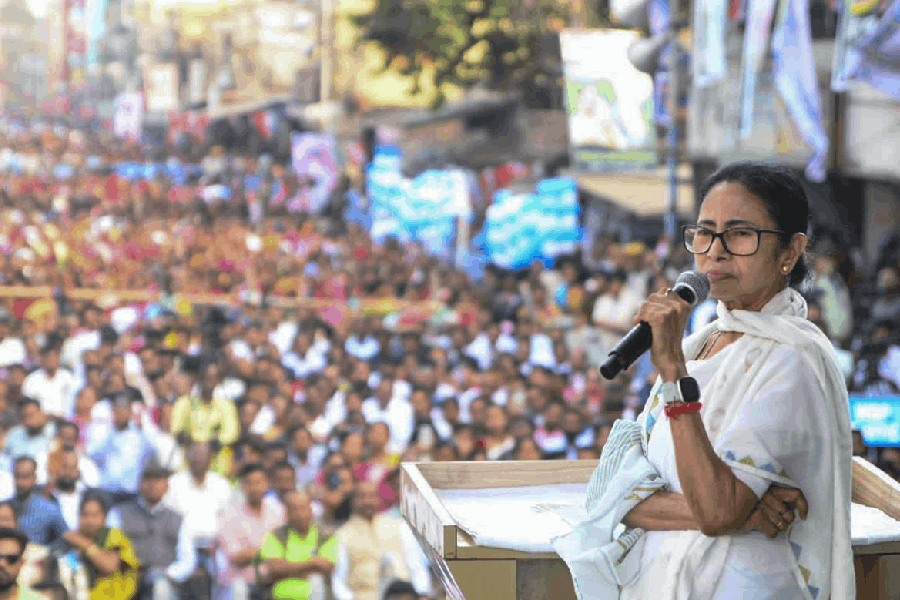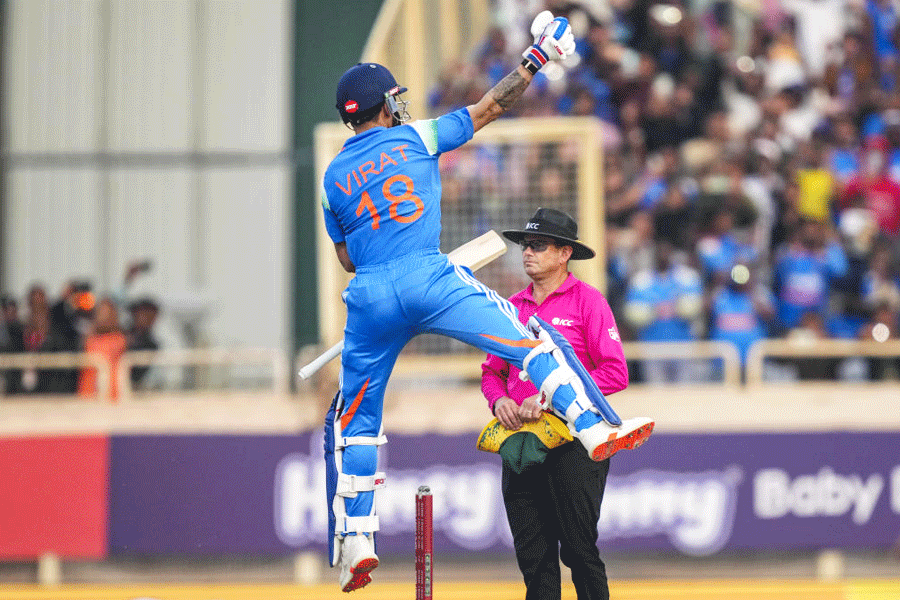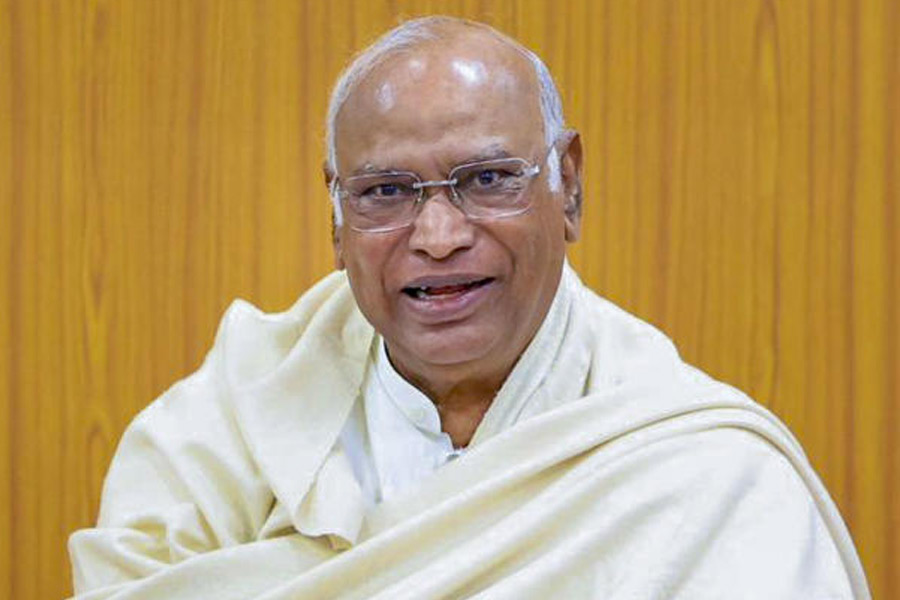
When Ganesh Haloi was being trained as an artist at the Government College of Art & Craft in the early 1950s, he had not heard of Chittaprosad (1915-1978), the self-taught artist and diehard Communist whose powerful images of toiling and suffering humanity have not lost any of their vitality or their ability to move viewers, and whose friable works, thanks to irresistible and insidious market forces, have become precious collectibles. Haloi, who curated the exhibition, Chittaprosad: Linocuts & Woodcuts, at Akar Prakar (July 23-Sept 15), says he was the first Indian artist of "international repute" - exhibitions of his works were held in the 1950s in Germany, Poland, New York and Czechoslovakia, and they were included in the collection of a museum in Prague, where a book on him was published. Haloi got to know about him only when he and the late Nikhil Sarkar, who wrote anecdotal histories of Calcutta, organised an exhibition to commemorate the 50th anniversary of the 1942 Bengal Famine. Like some of his contemporary artists, Chittaprosad has left behind his drawings of the cataclysm which serve as an indictment of man's inhumanity to man.
What would immediately strike any viewer at the recent exhibition is the strength of Chittaprosad's draughtsmanship and the breadth of his vision, notwithstanding the unmistakable stamp of social realism on some of them. He depicted children at play, nude couples making love and holding their offspring close to their naked bodies, colourful folk dancers from all over India, pastoral scenes, and workers with monumental bodies in the best of Soviet traditions who eke out a living by the sweat of their brows. This exhibition focuses mostly on Chittaprosad's rather utopian vision, in keeping with the ideology to which he remained true even in his last poverty-stricken days. In the make-believe world he created, human beings enjoyed a life of freedom and brotherhood unshackled by the forces of capitalism.

While this may sound cheesy, it is the dynamism of his drawings that raises them above mere agitprop. The Gujarati, Santhal, Kulu and Naga folk dancers break into a lusty number. A fisherman belonging to a Bombay village smiles heartily. Chiselled bodies are entangled in an embrace, although the absence of erotic charge is quite remarkable. A woman is suckling her baby. The strength and suppleness of his lines give these men and women a sculpturesque quality without any trace of stiffness or awkwardness.
Besides the obvious influence of Käthe Kollwitz, Nandalal Bose and Jamini Roy, too, had left their mark on Chittaprosad's depiction of folk toys and the simple life of villages. Wide-eyed children appear in the anti-tuberculosis drive. The artist's vitriolic satirical drawings are absent, although there is one image of a little boy being thrashed within an inch of his life in a classroom, while the "bookworm" devours his textbook.
However, it is not just wishful thinking - there are some troubling depictions of the skeletal famine victims who are visions of despair. But these living skeletons don't take things lying down. A skin-and-bones child standing near a garbage vat and raising a brick becomes an icon of protest against social injustice. Perhaps even more meaningful are the women textile works inside a tram going to work in Bombay, the double-storeyed city house and its working class inhabitants, and workers collecting their wages - a Van Goghesque play of chiaroscuro. Chittaprosad's gaze was unflinching.

